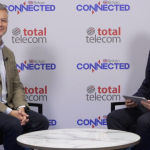News
2G networks expected to outlast 3G in Europe thanks to demand for voice roaming, low-bandwidth services.
3G could be consigned to history in Europe over the next decade, as operators come to rely increasingly on evolved 4G, and even 2G networks, for voice, data, and Internet of Things (IoT) services.
"There is still a place for 3G…[but] its role will diminish over time," said Guy Summers, head of machine-to-machine (M2M) connectivity at Telefonica Digital, during a panel session at Smart IoT London on Tuesday.
He said that approximately 70% of the Spanish incumbent’s cellular M2M connections are still carried by its 2G network, due to the huge demand for low-bandwidth, low-cost connectivity.
Meanwhile, going forward, 4G has the capacity to underpin bandwidth-hungry IoT services and is evolving to also provide narrowband IoT connectivity.
The 3GPP began work on the feasibility of using LTE to support IoT services in Release 12. It ramped up its activities to specifically include low-bandwidth, low-power LTE connectivity in Release 13, which was completed in March.
So, where does that leave 3G?
"3G falls between two stools," said Matt Hatton, CEO of IoT analyst firm Machina Research, during the same panel session. "It is a temporary solution to a problem."
Indeed, compared to 4G, 3G lacks the capacity needed to quickly transfer large volumes of data, while 2G networks are fully depreciated, potentially making them a lower-cost option for narrowband IoT compared to 3G.
Having said that, Japan’s mobile operators have already shut their 2G networks down completely, and the likes of AT&T in the U.S., and Telstra and Optus in Australia have announced 2G sunset plans. However, a different picture is emerging in Europe.
Telenor revealed in 2015 that it plans to shut down its 3G network in Norway in 2020, followed by its 2G network in 2025. Its logic is that the 2G network will still be useful for basic M2M and voice services – particularly roaming – all the while it is expanding the coverage and capability of its 4G network.
Hatton said on Tuesday that he has had similar conversations with several European operators.
For Telefonica’s Williams, operators will still rely on 3G for IoT connectivity in places where LTE networks have not been widely deployed, but will be gradually squeezed out "as 4G evolves into a standard that includes support for M2M."

















